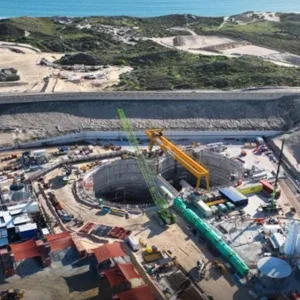It will play an important part in relieving traffic congestion and transporting residents and visitors much faster and easier. The driverless and fully automatic metro is expected to carry more than 100 million passengers a year.
The 17 new underground stations will connect Vesterbro, Frederiksberg, Nørrebro, Østerbro and the inner city.
Tunnelling works involved four TBMs with a diameter of 4.9m. The tunnels have been bored to depths varying from 20m to 35m and lined with sprayed concrete. Several emergency shafts are installed in the tunnels for ventilation and maintenance.
Copenhagen Metro Team (CMT), a joint venture of Salini Impregilo, Technimont ICB, and Seli, was awarded the civil engineering contract in 2011.
Civil works have been carried out by Cowi, Arup and Systra, which was responsible for tunnels and underground structures.
Lars Hauge, executive vice president of Cowi’s bridge, tunnel and marine business line, explains: “Together with our joint venture partners Arup and Systra, we were able to have leading experts solve the toughest challenges like squeezing in a new line between Magasin Du Nord department store’s foundation and the existing metro line.
“Or finding the optimal solution at Gammel Strand where the metro is built halfway in the Slotsholmen canal. There is no doubt that the City Circle Line has been a complex project out of the ordinary.”
Building Cityringen, with its high level of technology and innovation, was not an easy task. Copenhagen Metro Team I/S (or CMT – the fully owned Salini Impregilo company that built the infrastructure) worked for over 8 years to complete the project.
One of the main challenges of constructing the Cityringen was to build it in highly urbanised areas with historic buildings. An example of this is ‘Magasins Du Nord’, one of the city’s landmark buildings, where the TBM excavated one and a half metres below its foundations without obliging the shops to have to close.







